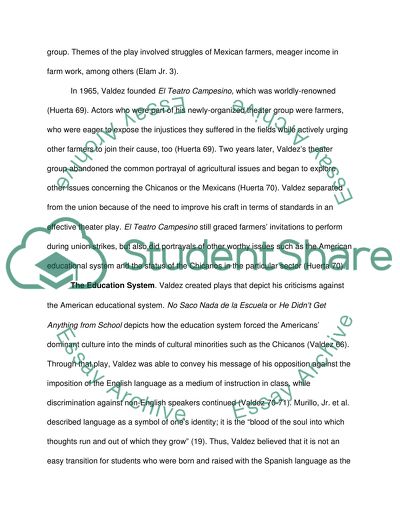Cite this document
(“Luis Valdez and El Teatro Campesino Research Paper”, n.d.)
Retrieved from https://studentshare.org/education/1402333-luis-valdez-and-el-teatro-campesino
Retrieved from https://studentshare.org/education/1402333-luis-valdez-and-el-teatro-campesino
(Luis Valdez and El Teatro Campesino Research Paper)
https://studentshare.org/education/1402333-luis-valdez-and-el-teatro-campesino.
https://studentshare.org/education/1402333-luis-valdez-and-el-teatro-campesino.
“Luis Valdez and El Teatro Campesino Research Paper”, n.d. https://studentshare.org/education/1402333-luis-valdez-and-el-teatro-campesino.


